The Bay Trail Preview: Intel Atom Z3770 Tested
by Anand Lal Shimpi & Brian Klug on September 11, 2013 12:00 PM ESTIn addition to showing Bay Trail running on a Windows 8.x platform, Intel showed us a “pre-beta” version of the platform running Android 4.2.2. I have to emphasize that the build they showed us definitely seemed pre-beta, as there was some instability, but overall the build was good enough to run some tests on and get a feel for. Intel made it clear that they do have a lot more work to do on their Android build before it’s considered close to final quality than the Windows equivalent.
Inside Android we can still see the CPU state table data and how long the cores are sitting in each performance state still, despite this now being managed in-silicon on Bay Trail. In addition Android sees the 2.39 GHz Z3770 boost frequency and reports it. I didn’t see any strange behavior on the device while running tests and watching CPU frequency, if anything the reference design platform stayed at the maximum boost frequency even with four cores plugged in for an impressive amount of time. Of course this is a tablet so there’s more TDP to play around with compared to a phone.
Depending on where you were in the Android UI, there was some definite stutter, but I’m told this is a result of an issue with Dalvik not allocating threads to cores properly that Intel is still tuning, something which you can see plays itself out as well in the AndEBench Java test that runs in Dalvik. The launcher especially had some stutter, but Intel claimed they were aware of it and that final performance in areas like that would be dramatically improved. Regardless of the state of Bay Trail’s Android port, it affords us the opportunity to look at performance through our pretty standard benchmark suite.
On the CPU side for Android we’re still limited to just a few tests that rely on a combination of native code and stuff that runs inside the browser. That means AndEBench, JavaScript benchmarks, and part of Vellamo.
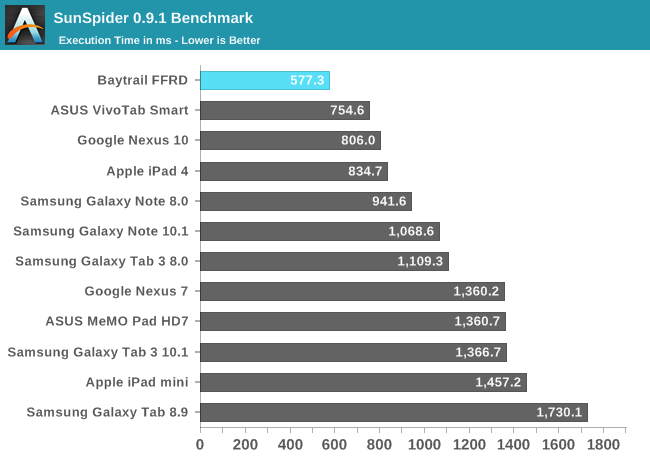
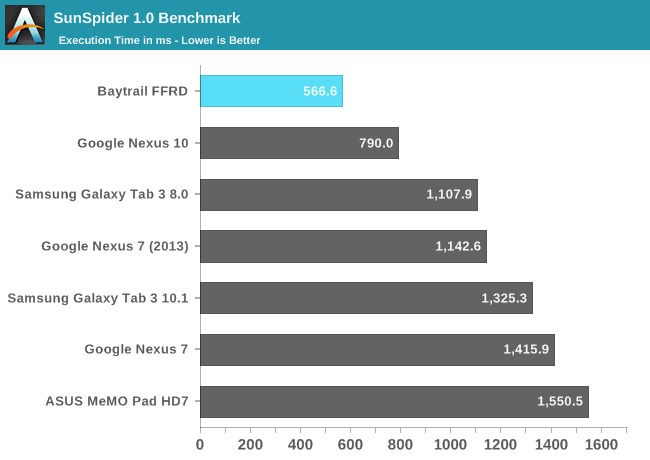
Sunspider has been a regular staple but in recent time has become an exercise in browser JavaScript engine optimization rather than actual performance. Nevertheless the FFRD takes the crown in both 1.0 and 0.9.1 (we have more tablet data from the 0.9.1 version so I replicated it here).
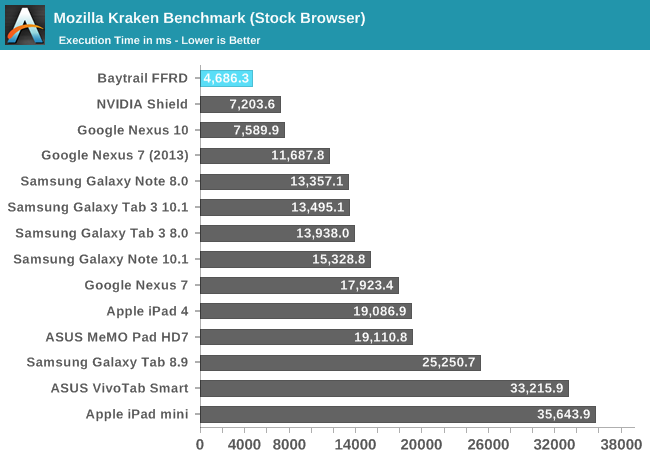
Kraken is another JavaScript benchmark which hasn’t quite been an optimization target everyone has gone after lately, and it’s also longer, which makes it a bit more reliable. Once again Bay Trail takes the crown here with notably faster JS engine performance.
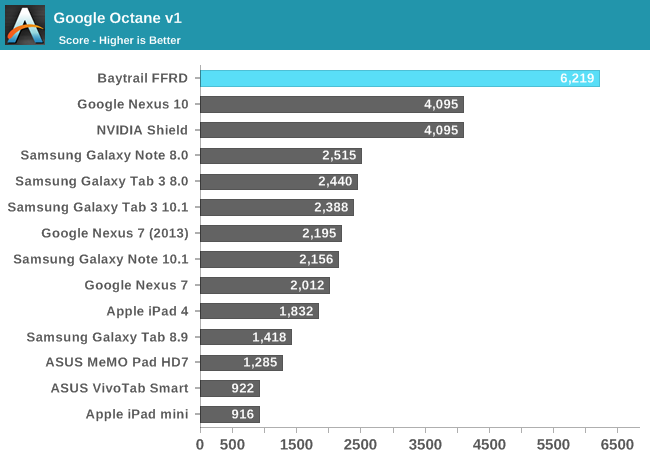
Google Octane is another JS test that isn’t quite as platform optimized yet, here there’s once again dominance by Bay Trail with just over a 50 percent higher score.
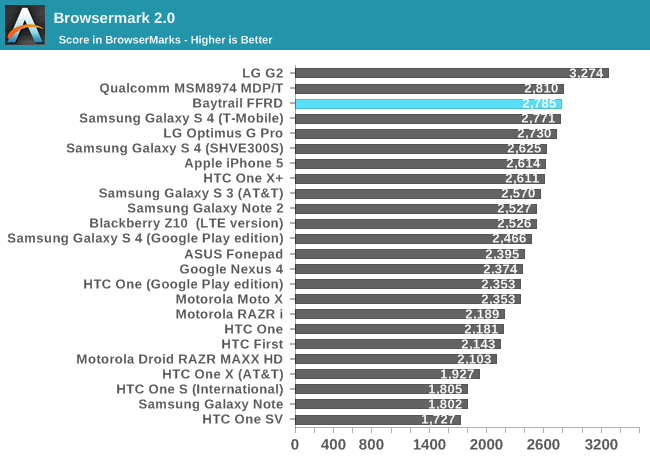
Browsermark has a combination of both JS tests and other web related performance metrics. Here the Bay Trail platform lags behind the 8974 based devices slightly. This isn’t a raw JavaScript benchmark again but rather a more holistic web browsing performance test, so it’s interesting to see Bay Trail a bit behind here.
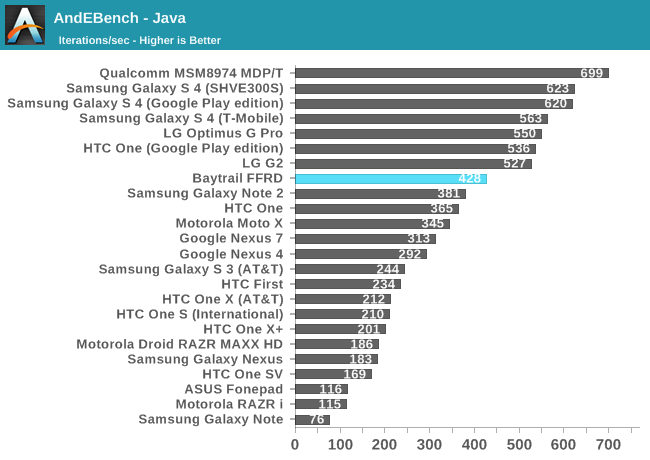

AndEBench is a combination native compiled microkernel benchmark (indicative of NDK application performance) that also runs a very similar workload atop Dalvik like a normal Android Java application. Here we can see what Intel was talking about when they said they have more work to do getting Dalvik working properly at dispatching threads to appropriate cores, hopefully the Java number will climb considerably. The native test also shows a lead over the competition.
GPU Performance
While Bay Trail clearly leads on the CPU side, its GPU performance is more middle of the road - at least among the higher end SoCs. In 3DMark Bay Trail's GPU performance is aided by the more CPU bound nature of the benchmark, but here Intel is able to beat the Snapdragon 600. Snapdragon 800 on the other hand pulls ahead by around 35%.
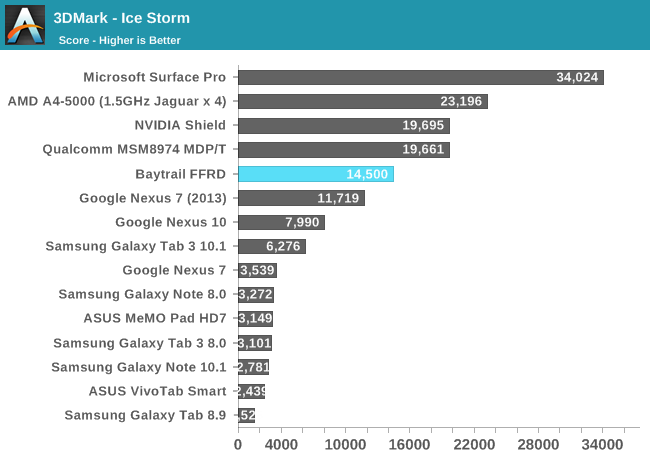
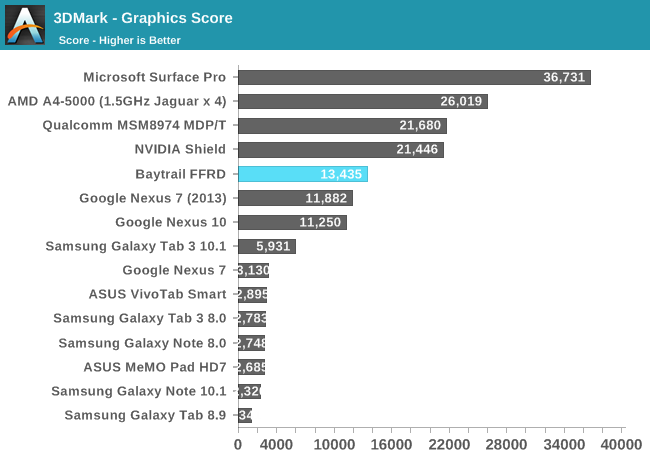
The 3DMark Physics test is effectively a CPU test, which once again plays to Bay Trail's strengths. Here it's faster than Snapdragon 800 and Cortex A15. Only Ivy Bridge is quicker in a tablet.
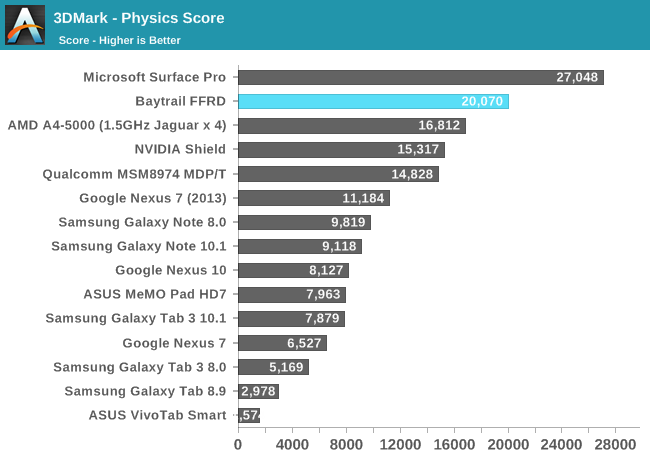
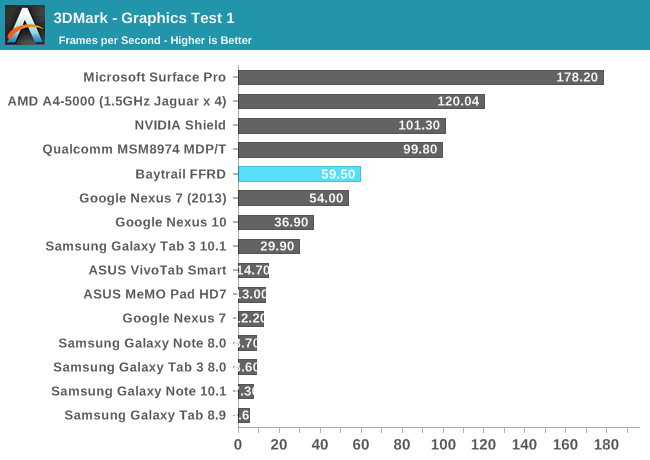
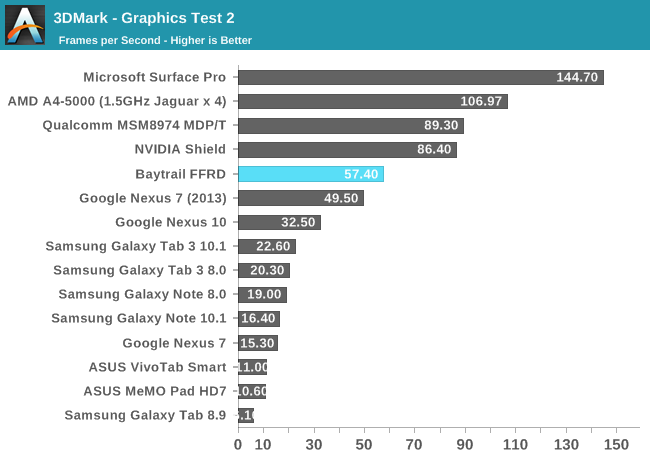
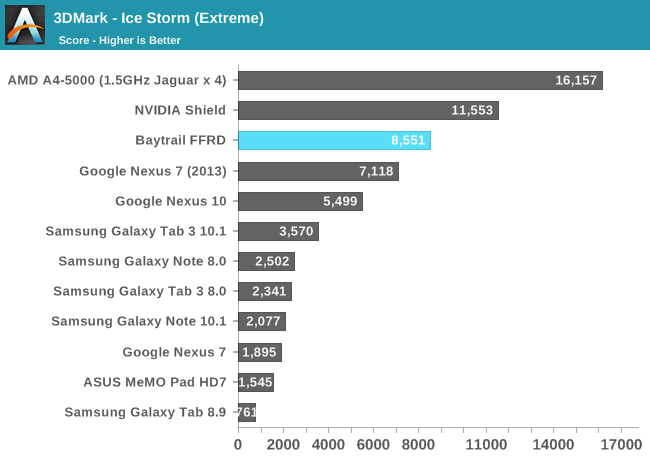
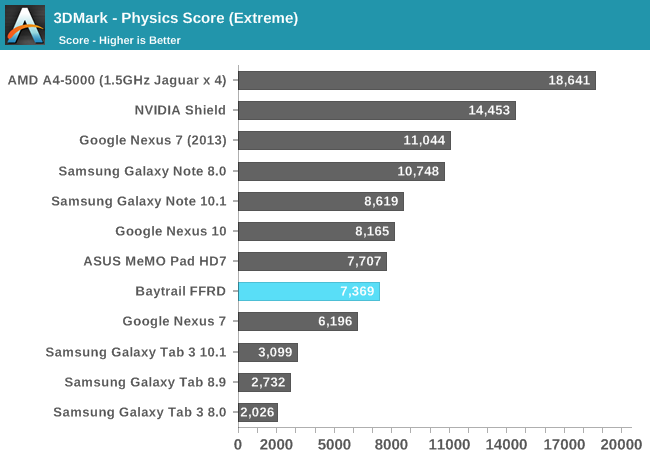
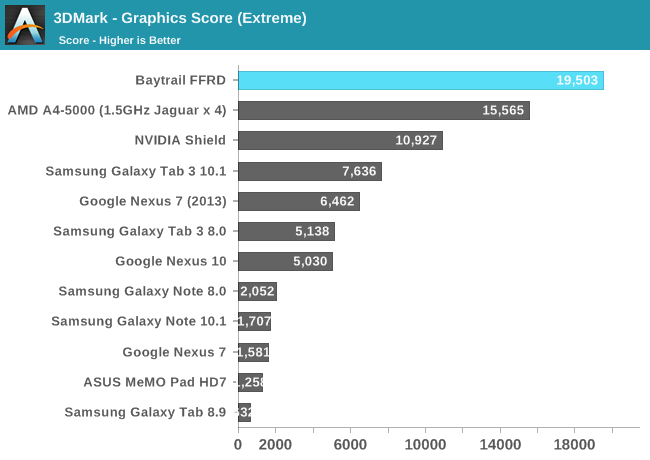
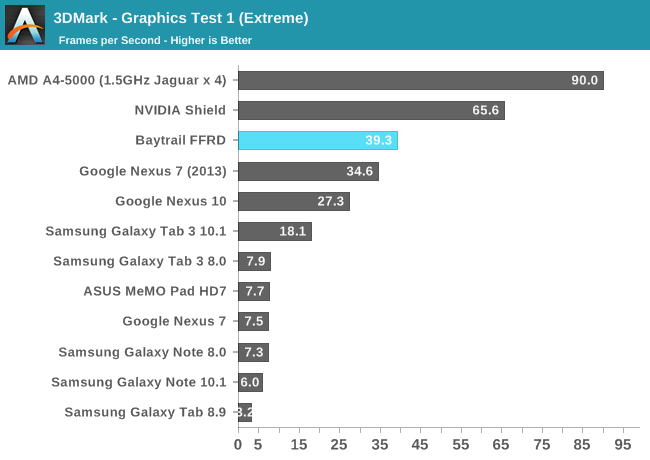
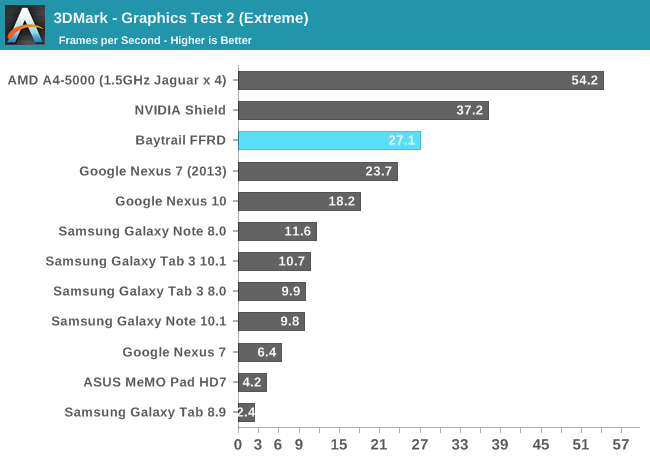
Basemark X
Basemark X is a bit more GPU bound than 3DMark, and we also have iOS data here so we can put Bay Trail's performance in better perspective. Here Bay Trail is a bit slower than the iPad 4, and clearly Tegra 4 and Snapdragon 800. Intel's GPU in Android is measurably quicker than Adreno 320/S600 though.
Bay Trail's onscreen performance is penalized by the FFRD's extremely high native resolution.

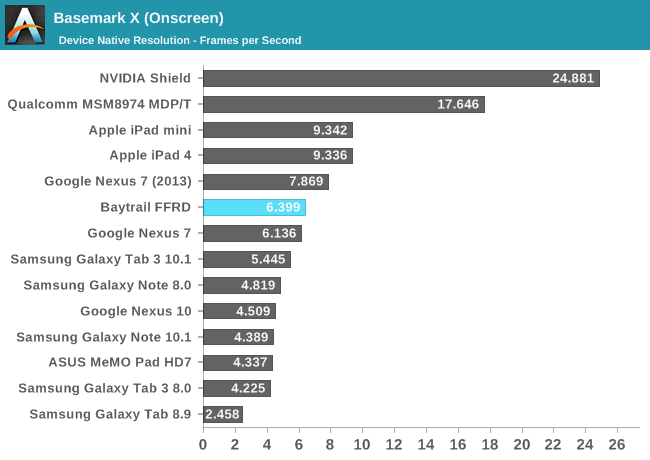
GLBenchmark 2.7
The more interested GLBenchmark numbers, T-Rex HD, show Bay Trail just behind the iPad 4 in performance. It's definitely not bad at all but clearly not industry leading.
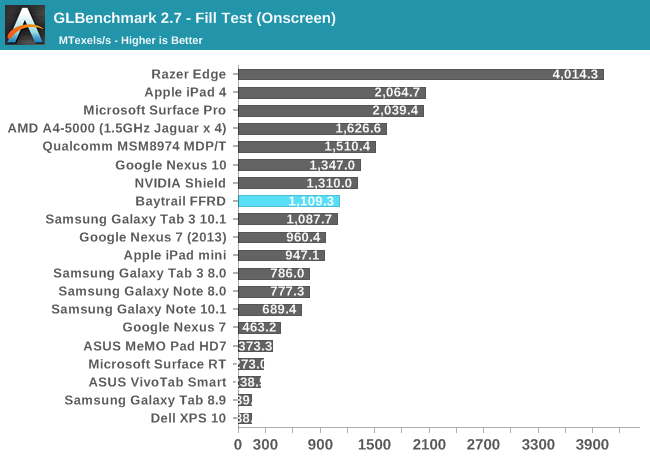
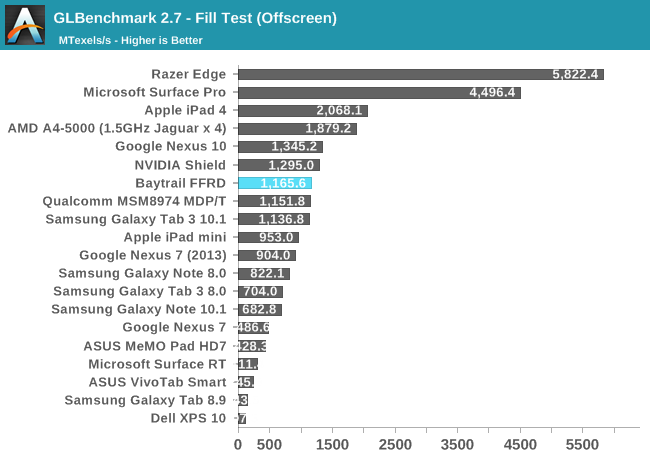
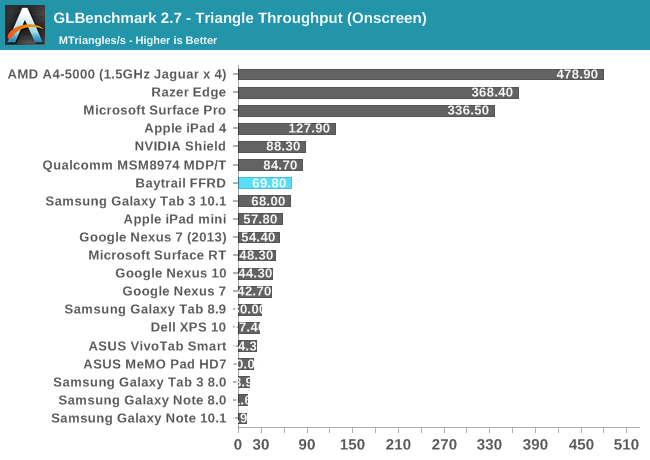
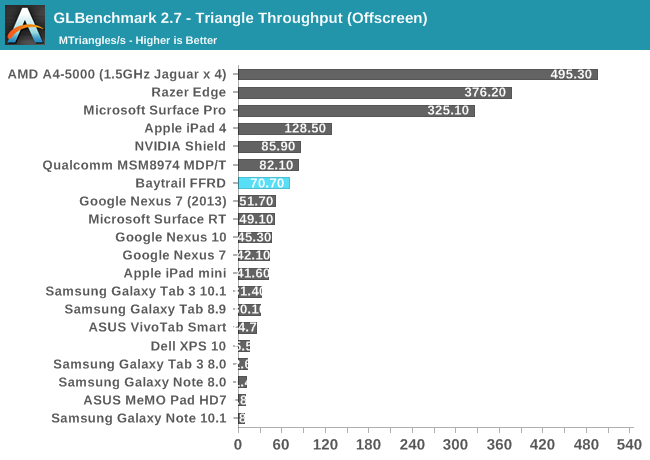
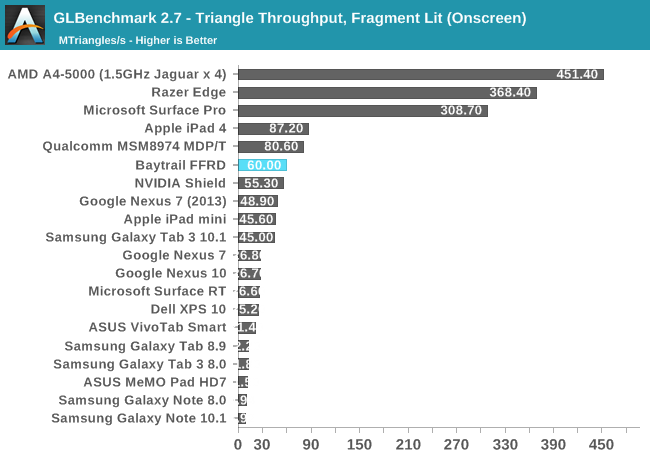
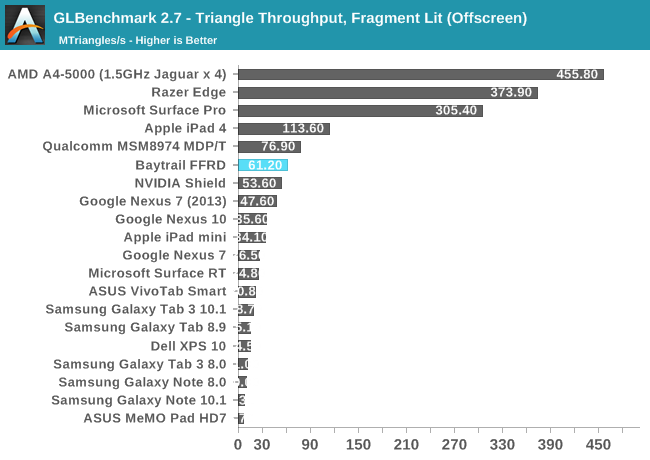
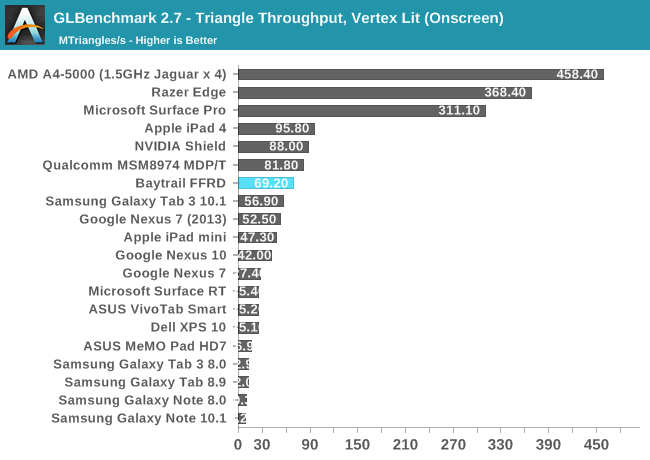
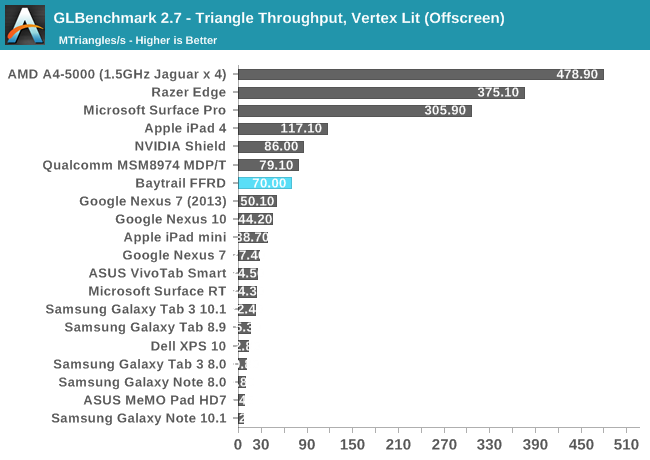
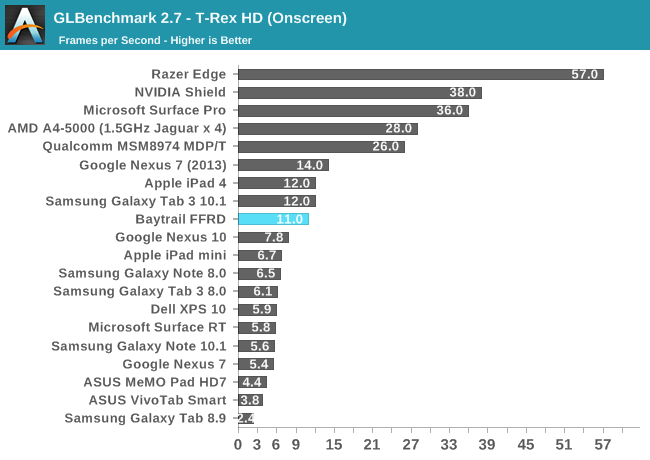
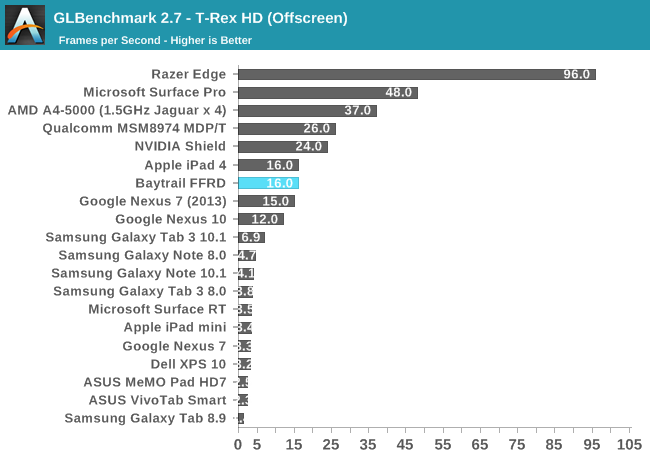
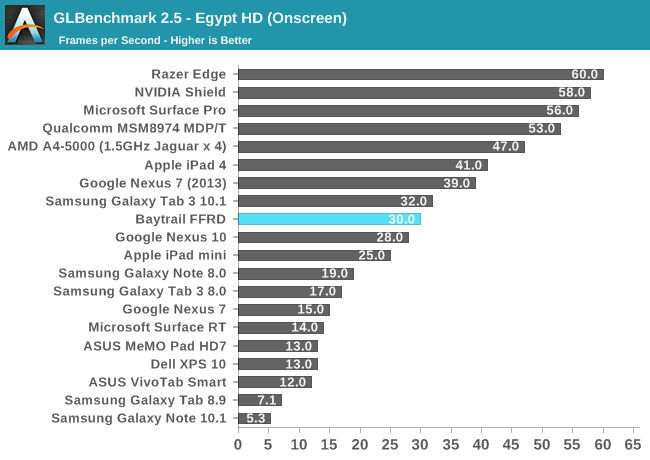
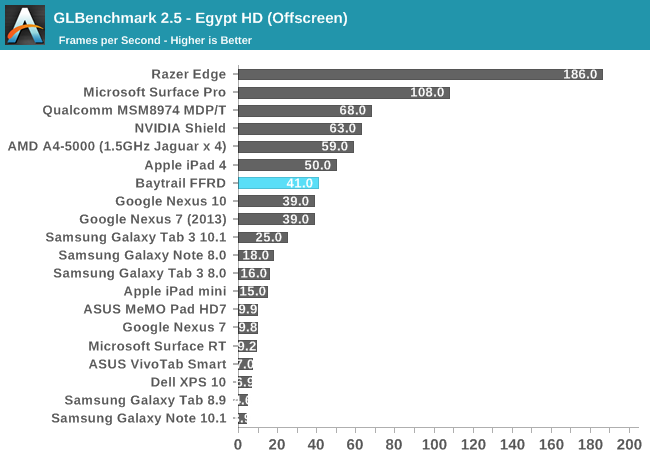
















190 Comments
View All Comments
Bob Todd - Wednesday, September 11, 2013 - link
Where are all the people that kept claiming it was impossible for Silvermont to have better CPU performance than Kabini in previous articles? It's either as fast or faster with significantly less power draw than the AMD part. GPU performance is a bit of a downer but right inline with what I expected based on a cut down HD4000. Kabini's GPU kicks its ass, but it's not like either of them is fast enough for me to play real PC games on so it's immaterial to me for now. I'd like this in an 8" or 10" with a 2560x1440 display, a reasonably fast IO solution, and Windows 8.1 for ~$500.Nagorak - Thursday, September 12, 2013 - link
Anyone who was saying that was an idiot. Intel's way ahead of AMD on both their production process and their CPU architecture. If this part weren't way better it would have been surprising.fteoath64 - Thursday, September 12, 2013 - link
"Intel's way ahead of AMD", by 30% is good but not great. I would say by 60% would be great but it is not the case. AMD is also on generation older process node, so it is not that bad for them as their gpu makes up the difference in some ways.Tangey - Wednesday, September 11, 2013 - link
In your valley view overview a while back, you expressed amazement that imaginations video decode hardware was present, but you were certain it was. Has this now been dropped in baytrail ?tabascosauz - Thursday, September 12, 2013 - link
I was going to be excited about Silvermont and all was well until I saw the GPU charts and changed my mind. Absolutely miserable performance.Come on, Intel. At this rate you would have been better off using IT GPUs. Care to explain using only 25% of HD 4000's EUs? I don't think heat is an excuse here, and power consumption shouldn't be either.
MyOpinionDoesNotMatter - Saturday, September 14, 2013 - link
It took Intel a few generations to optimise their CPUs for low TDP....in time they will likely do the same for their integrated GPUs. Probably what the Intel engineers are focusing on right now.shywho - Thursday, September 12, 2013 - link
I do not see any DSP on this chip - similar to the Hexagon DSP on the QualComm Snapdragon or the Icera on the Tegra. Is this supposed to be external to the chip?althaz - Thursday, September 12, 2013 - link
This is interesting and somewhat impressive, but to be truly relevant there's a couple of other things required:* +50% graphics performance
* Integrated modem
* Release it last year
ET - Thursday, September 12, 2013 - link
This shatters AMD's tablet aspirations. If the Z3770 performs around the A4-5000, then AMD's low power APU, with 2 cores and running at 1GHz, using more power, is pretty much a no go. From the few benchmarks here it looks like the new Atom's GPU performance will be around that of the 225MHz AMD GPU.All in all, while I'd love even better GPU performance, I think I'll be happy with a Z3770 tablet, and in CPU performance it will be an upgrade to my E-350 laptop. I'll be waiting to see what Airmont brings next year.
silverblue - Thursday, September 12, 2013 - link
AMD needs a Kabini which is clocked at A4-5000 levels but has a much smaller GPU. That in itself might make for a more balanced chip.